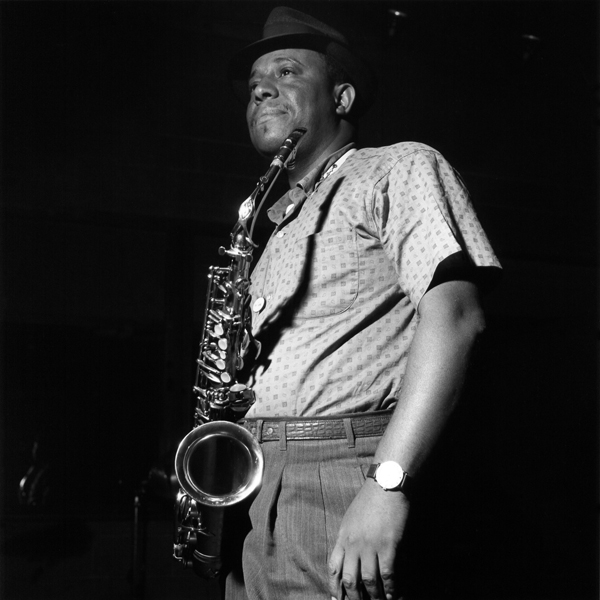April 16, 2014
To believe in serendipity—that’s the operative word when it comes to alto saxophonist Lou Donaldson’s soul-jazz hit, “Alligator Bogaloo,” the opening track from the leader’s heralded—artistically and commercially—album Alligator Bogaloo, released by Blue Note in 1967. The tale of its origin has been told so many times that it holds mythic status of affirming the power of improvisational jazz. For his LP session at Rudy Van Gelder’s Englewood Cliffs, N.J., studio, Lou finished recording five tracks (including two relatively short tunes, “The Thang” and “I Want a Little Girl”—clocking in at 3:34 and 4:29, respectively), but then was told that he was three minutes shy of a complete album. With no new compositions left in his songbook for the quintet date, he decided to cook up a quickie filler, even if it were to be relegated to the last spins of the album’s second side. So, a toss-away?
Not so. Lou made up an impromptu riff and figured the rest of his band would just follow him on his ad hoc ditty. The melodic figure of the simple, easy-going piece was so infectious that the band played along joyfully, with cornet player Melvin Lastie taking the lead along with Lou, while the rhythm section—youngsters all, including B-3 up-and-comer Lonnie Smith, pre-superstar guitarist George Benson and drummer Leo Morris (the birth name of soon-to-be session ace Idris Muhammad)—got the rhythm grooving and made the song—and all its listeners—dance.
Lou took the first break, followed by Melvin, George and Lonnie—all delivering light-hearted, playful solos that stretched the song well beyond the three-minute goal (it clocks in at 6:57). And, after the experience of playing the song and hearing it back, they all realized it was the crème de la crème of the album, hence its privileged sequencing position as lead-off.
Named a 2013 NEA Jazz Master, Lou moved to New York in the late ‘40s from his native North Carolina to attend the Darrow Institute of Music on the GI bill (he had served in the Navy) and quickly became a go-to alto saxophonist in small Harlem clubs. In 1952 Lou was playing a gig at Minton’s Playhouse when he was approached after a set by Blue Note Records founder and talent scout Alfred Lion. Alfred asked Lou if he’d like to record a Charlie Parker-like date, which turned out to be a session for the Milt Jackson Quintet, with pianist John Lewis, bassist Percy Heath and drummer Kenny Clarke (the band that would morph into the Modern Jazz Quartet).
Lou soon became not only a valuable leader at the label, but also a session regular with the likes of Thelonious Monk, Clifford Brown, Horace Silver and Art Blakey. During those years Lou was in the forefront of the birth of the hard bop genre. Lou as it turns out was a talent scout in his own right, bringing Horace and Clifford to the label as well as Grant Green, Blue Mitchell, Donald Byrd and Curtis Fuller, among others over the years.
Lou continued to record for Blue Note until 1963, after which he began recording for the Argo and Cadet labels before returning to home base in 1967. His first Blue Note album that year was a nonet date with an all-star band, including Freddie Hubbard, Wayne Shorter, Pepper Adams, McCoy Tyner, Ron Carter and others. The second of his four recordings for Blue Note in 1967 was Alligator Bogaloo. Lou enlisted Melvin, a New Orleans native who was a crossover artist in the r&b vein (he also produced the Dixie Cups 1964 hit pop record “Chapel of Love”). He also asked both George and Lonnie to join the sessions, primarily because the pair had been playing together in the guitarist’s 1966 quartet that delivered two albums for Columbia, It’s Uptown and Cookbook, both produced by the legendary John Hammond. (Smith started his solo career in 1967 with the album Finger Lickin’ Good. It was also on Columbia though he moved to Blue Note for four albums into 1970 after Lou drew the label’s attention to his gurgling, churchy B-3 playing.)
A hard-bop-meets-soul-jazz classic, Alligator Bogaloo features three of Lou’s tunes, including the title track, the swinging, r&b styled “The Thang,” with organ shouts and exuberant utterances, and the upbeat “Rev. Moses” where all the bands members romp with cool Lou and fiery Lonnie leading the way. Lonnie contributes the slow, steady “Aw Shucks!” where the band opens up for instrumental expressions in the relaxed zone.
Lou also covers vibraphonist Freddie McCoy’s oozing soul-jazz gem, “One Cylinder” (George’s guitar ebullience is at its best on this track), and closes the disc with a ’30s-era ballad, “I Want a Little Girl.” With Melvin sitting out, this is Lou’s luminous lyrical showcase.
Typically today the 86-year-old Lou introduces his live shows by saying it’s going to be a straight-ahead jazz evening, noting, “No fusion, no confusion.” While he certainly does not plug electrically in the strict fusion sense, Lou usually plays his hit, “Alligator Boogaloo,” which is, in essence a fusing of hard bop and soul jazz. It’s interesting that 46 years after this kind of ’60s fusion was recorded, it is accurately deemed straight-ahead by today’s standards. And in Lou’s alto delivery, there’s no confusing that it’s deliciously straight-ahead.







